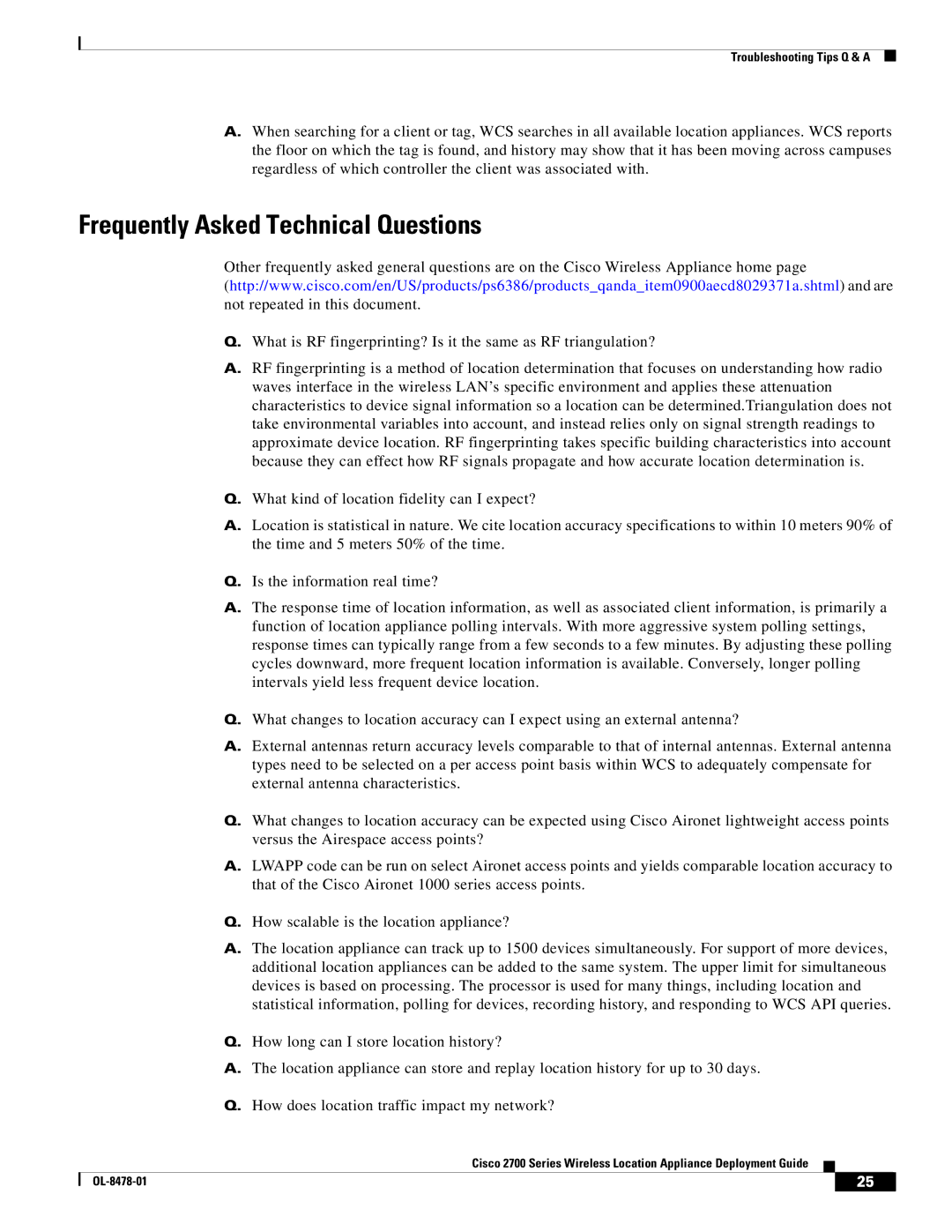
Troubleshooting Tips Q & A
A.When searching for a client or tag, WCS searches in all available location appliances. WCS reports the floor on which the tag is found, and history may show that it has been moving across campuses regardless of which controller the client was associated with.
Frequently Asked Technical Questions
Other frequently asked general questions are on the Cisco Wireless Appliance home page
(http://www.cisco.com/en/US/products/ps6386/products_qanda_item0900aecd8029371a.shtml) and are not repeated in this document.
Q.What is RF fingerprinting? Is it the same as RF triangulation?
A.RF fingerprinting is a method of location determination that focuses on understanding how radio waves interface in the wireless LAN’s specific environment and applies these attenuation characteristics to device signal information so a location can be determined.Triangulation does not take environmental variables into account, and instead relies only on signal strength readings to approximate device location. RF fingerprinting takes specific building characteristics into account because they can effect how RF signals propagate and how accurate location determination is.
Q.What kind of location fidelity can I expect?
A.Location is statistical in nature. We cite location accuracy specifications to within 10 meters 90% of the time and 5 meters 50% of the time.
Q.Is the information real time?
A.The response time of location information, as well as associated client information, is primarily a function of location appliance polling intervals. With more aggressive system polling settings, response times can typically range from a few seconds to a few minutes. By adjusting these polling cycles downward, more frequent location information is available. Conversely, longer polling intervals yield less frequent device location.
Q.What changes to location accuracy can I expect using an external antenna?
A.External antennas return accuracy levels comparable to that of internal antennas. External antenna types need to be selected on a per access point basis within WCS to adequately compensate for external antenna characteristics.
Q.What changes to location accuracy can be expected using Cisco Aironet lightweight access points versus the Airespace access points?
A.LWAPP code can be run on select Aironet access points and yields comparable location accuracy to that of the Cisco Aironet 1000 series access points.
Q.How scalable is the location appliance?
A.The location appliance can track up to 1500 devices simultaneously. For support of more devices, additional location appliances can be added to the same system. The upper limit for simultaneous devices is based on processing. The processor is used for many things, including location and statistical information, polling for devices, recording history, and responding to WCS API queries.
Q.How long can I store location history?
A.The location appliance can store and replay location history for up to 30 days.
Q.How does location traffic impact my network?
Cisco 2700 Series Wireless Location Appliance Deployment Guide
| 25 |
| |
|
|
